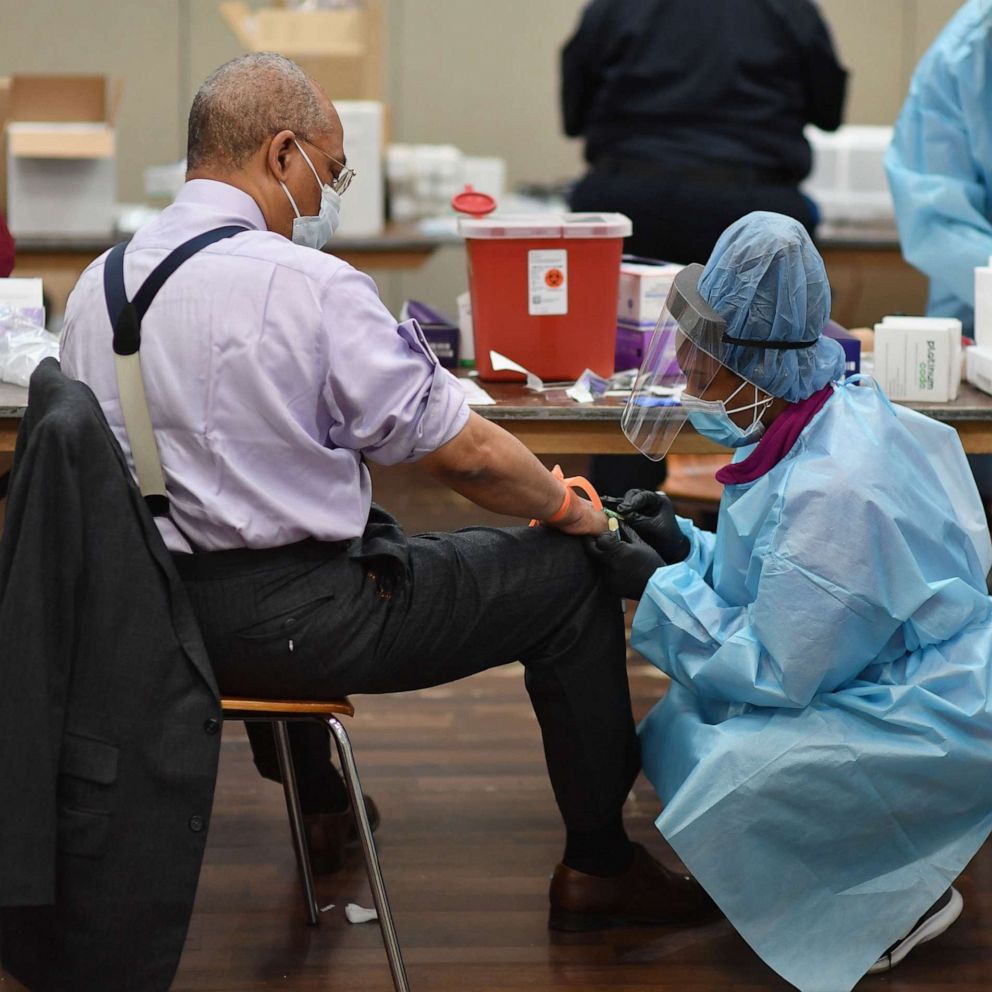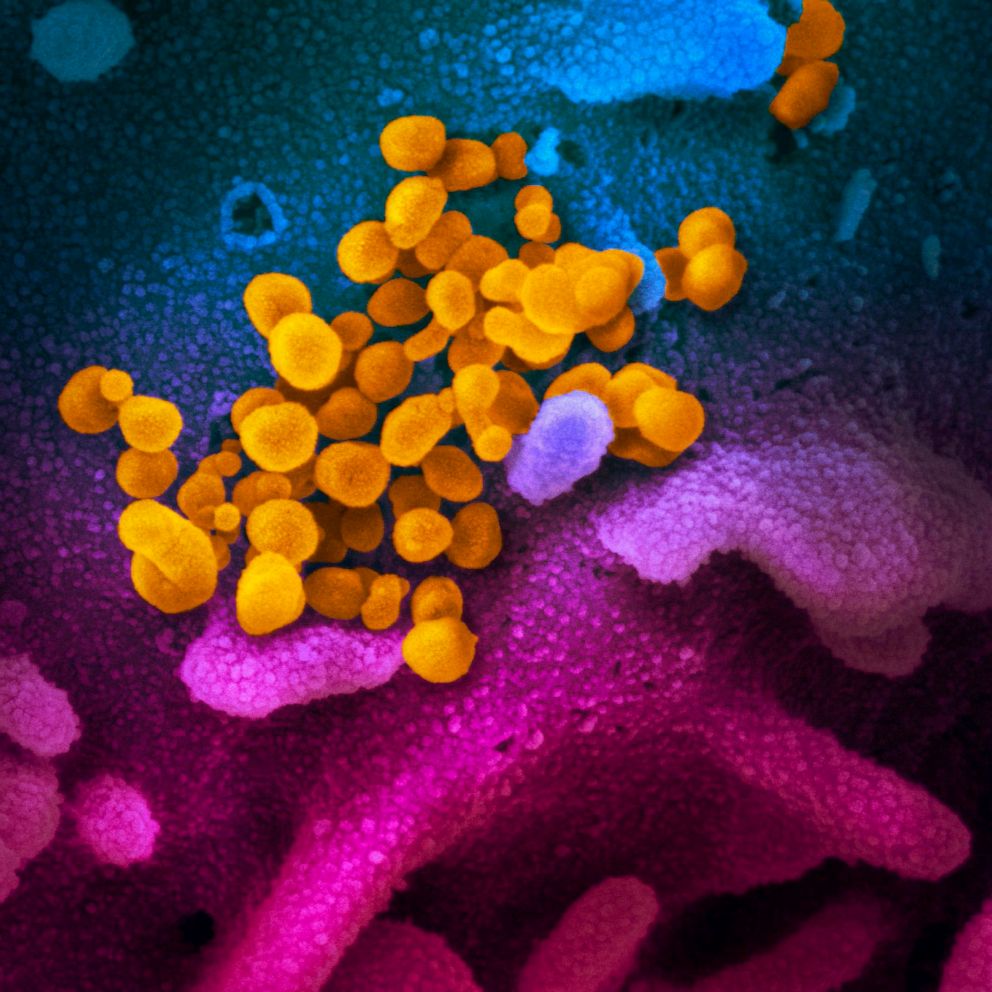What is R-naught for the COVID-19 virus and why it's a key metric for re-opening plans
The concept is crucial to curbing the novel coronavirus. It's also complicated.
If you've been reading coronavirus news coverage, you've likely stumbled across a reference to a term called "R0." It's been on the tips of world leaders' tongues in recent months, including German Chancellor Angela Merkel's, whose R0 explanation garnered a striking 9 million views on Twitter in April.
Pronounced "R-naught," the reproductive number is an indicator of how contagious a disease is, or how easily it spreads from person to person in a community. The number is important because government leaders are using R0 as a proxy for determining whether their respective COVID-19 outbreaks are growing, shrinking and or holding steady.
Crucially, R0 is not a fixed number. It's a jumping off point that's influenced by many factors, including human behavior.

What is R0?
The reproductive number of a virus, or R0, is the number of people, on average, that one infected person will subsequently infect. The naught in R0 refers to the zeroth generation of a disease, as in "patient zero." A higher R0 means more people will be infected over the course of the outbreak. A lower number means fewer people will be infected over time. That replication will continue if there are no vaccinations against the illness or immunity in the population.
Because that number is imprecise and variable, it's often expressed as a range.
Here are a few examples:
If R0 is 1, each infected person infects just one other person, on average. Over time, the number of infected people will remain the same.
If R0 is less than 1, each sick person is infection fewer than one person, on average, so the number of infected individuals will shrink over time. In case case of COVID-19, and R0 of less than 1 means lockdown measures could be eased.
If R0 is greater than 1, each sick person is infecting more than one person, on average, so the outbreak will grow. So, lockdown measures may need to remain in place.
And while R0 = 1 and R0 = 2 might seem close, "the difference between a reproductive number of 1 and a reproductive number of 2 is huge, in terms of the number of people who will ultimately be infected," Emily Gurley, an associate scientist at Johns Hopkins Bloomberg School of Public Health explained during an online course she teaches about contact tracing.
"Everything we can do to help us get the reproductive number closer to 1 will help us control the spread of a disease," Gurley added.

Measles, which is one of the most infectious diseases that scientists know of, has an R0 of about 15. (While there's some dispute about this number, measles is frequently cited as having an R0 between 12 and 18 in scientific literature.)
With an R0 of 15, every person infected with measles will go on to sicken 15 additional people.
On the other end of the spectrum, MERS, or Middle East Respiratory Syndrome, another type of coronavirus, has an R0 lower than 1, meaning on average, each infected person infects less than one other person. Because of that low reproductive number, MERS does not usually result in large disease outbreaks.
How herd immunity from coronavirus is developed
For now, scientists have calculated the R0 of the novel coronavirus to be between 2 and 3, meaning each infected individual will infect to two to three additional people, on average.
As a historical comparison, the R0 of the 1918 Spanish flu pandemic is estimated to have been between 1.4 and 2.8, according to an article published in BMC Medicine.
What are the limitations of R0?
They're numerous.
Some government leaders have framed their discussion of R0 as a race to get below 1, but like many scientific concepts, R0 is more complicated than a one-time race to success.
R0, which involves modeling, can change from place to place and is impacted by human behavior. It involves imperfect and different estimates based on assumptions and educated guesswork by scientists. As researchers aptly noted in a paper published in the journal Emerging Infectious Diseases last year, R0 is "easily misrepresented, misinterpreted, and misapplied."
As in the case of measles, scientists continue to disagree on the R0 of even diseases they've been studying for decades.
In the United States, the COVID-19 outbreak has not been uniform. Different regions, states and cities have had their own micro-outbreaks, which are on different timelines, making it hard to assign one R0 to the entire country. New York City, Seattle and Chicago may have very different R0 numbers than one another.
That's not to say governments shouldn't try to lower their R0 numbers. Though imperfect, it's a useful proxy for estimating how the lockdown and reopening policies of states and cities are working -- or not.
What to know about the coronavirus:
- How it started and how to protect yourself: Coronavirus explained
- What to do if you have symptoms: Coronavirus symptoms
- Tracking the spread in the U.S. and worldwide: Coronavirus map
Tune into ABC at 1 p.m. ET and ABC News Live at 4 p.m. ET every weekday for special coverage of the novel coronavirus with the full ABC News team, including the latest news, context and analysis.







